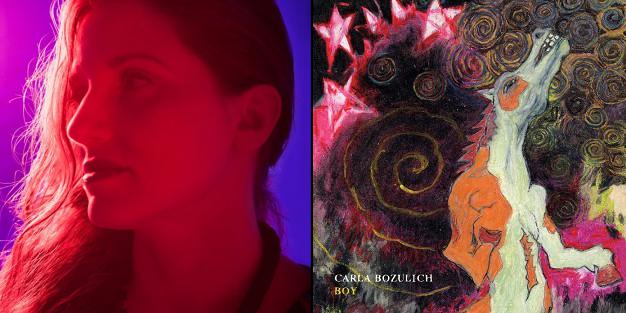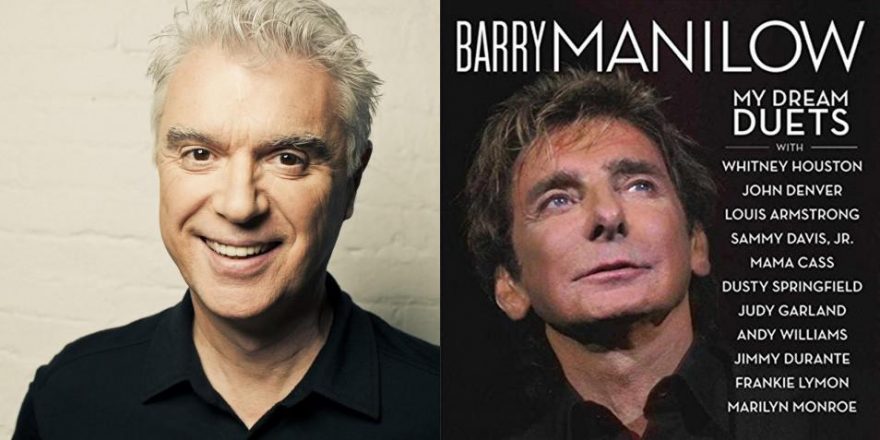On the occasion of the November 4th release of Deerhoof’s really excellent new album La Isla Bonita (which you can buy here), we invited the band’s drummer Greg Saunier to be guest editor of Talkhouse Music this week. Greg enlisted some Deerhoof fans to write about new albums for the Talkhouse and expertly edited the pieces too. It’s all great stuff. Thanks, Greg!
— the editors of Talkhouse Music
I’m typing out old New York Times articles about Cat Stevens because it makes me feel like I’m doing something, and typing is one of the only things I actually know how to do. Someone I just met — barely met — texted me that typing and spelling are real skills I can measure and claim to have. He said that when it comes to writing, he procrastinates by writing about procrastination. So that’s what I’m doing now. I just made a fire in the fireplace; it took me over an hour to get it really going. Fire-making: not a skill I possess. I was listening to the Cat Stevens song “Katmandu” and I was thinking about how he sounds exactly like a friend whose voice I’ve always not liked very much because he reveals too much of his English accent. Cat’s voice sounded so similar, yet his was so beautiful, and I wondered what the difference was. And then Cat sang, “Chop me some broken wood/We’ll start a fire, white warm, like the dawn and help me see,” as I was stoking the fire, getting aggravated about my friend and for being so lousy at getting the fire going. Just then a small log leapt out of the fireplace, throwing embers onto the rug, and I stomped them out with my slipper. Cat was still sweetly singing in the background and no serious damage was done. I had to get out the vacuum cleaner.
“Katmandu” is on the 1970 album Mona Bone Jakon, which is fun to say out loud in an incredulous tone. I was in Los Angeles last week and on my first night in town I went to see a guy do stand-up comedy. After the show he bought me a sandwich and I asked him what he thought of Cat Stevens. He said Cat was always big with the Jewish kids he grew up with; all the camp counselors could play Cat Stevens songs on guitar. We couldn’t remember which was the other good album, besides Tea for the Tillerman (also released in 1970), and Greatest Hits, of course. When I got home, I did some googling and decided that Mona Bone Jakon was the other good album, just because it has “Trouble” on it. (I discovered that there is no Harold and Maude soundtrack; several blogs encouraged me to make a playlist from iTunes.) I confidently wrote to the guy, to tell him the news, and included an MP3 of “Trouble” as proof. It turns out that I was wrong on a few levels. (He never wrote me back.) The other good album is Teaser and the Firecat (1971), with “Moonshadow,” “Peace Train” and “Morning Has Broken.”
When I spoke with the Talkhouse’s current Guest Editor over Skype, he told a terrific story of trying to write a song as good as “Morning Has Broken.” It was while Deerhoof was working on Offend Maggie (2008), and he listened to the song exclusively, on repeat, for days, weeks, in the hope of suddenly being able to say, “Now I’m going to write one like that.” Greg gave up, presumably because he felt he’d never be able to write a melody to match that one. He said the melody of “Morning Has Broken” — like so many Cat Stevens songs — sounds like “it was etched in stone at the beginning of time.”
About five months ago I sat down at my kitchen table to eat dinner in front of my computer, and I thought about what I might watch. I’d seen Kim Gordon recently and I remembered that I wanted to see her sing “Aneurysm” with the remaining members of Nirvana at the Rock & Roll Hall of Fame induction ceremony. I ended up watching the entire show — three-plus hours — skipping only past a few minutes of Kiss. Cat Stevens followed Kiss, with a montage of photos, music and an overdubbed narration by Stevens himself: “Music was like my religion and I was devoted to it as anyone could be.” What struck me most was that he was so incredibly cute. Beautiful, sexy, dreamy, perfect. Then Art Garfunkel appeared on stage (with a misplaced bottle of Poland Spring water on the podium). He wisely pointed out that there would have been no room at the top of the charts for Cat Stevens had Simon and Garfunkel not split up after releasing Bridge over Troubled Water in 1970. He said vaguely clever things like, “Show business is a part of life, but life is life,” and “he turned his back on it all and sought awareness as a man.” But what resonated most was this, rendered in his very slow, deliberate delivery: “We loved him in that he offered to us the fascinating creation of an evolving identity.”
But to me, he seems to have stayed exactly the same. And I’m not saying that’s a bad thing. I mean, the guy has changed his name twice. It would be hard to argue that his identity wasn’t evolving on some literal level at the very least. He was born Steven Giorgiou, to a Greek father and a Swedish mother. They ran a London café (which he sings about in his new song “Editing Floor Blues”), and by the time he was 18, he’d changed his name to Cat Stevens and quickly become a pop star… and then had quickly run out of steam. He fell ill with tuberculosis, was hospitalized for several months and eventually made his first “comeback” in 1970 with Mona Bone Jakon.
A few days after I watched the Rock & Roll Hall of Fame ceremony, my bandmates came up to visit and rehearse at my house. We sat around in the evening and did what bands are supposed to do: play music, listen to music and talk about music. I told them I had watched the show and admitted to getting teary-eyed during the performance of “Peace Train,” with the full choir chiming in, and Paul Shaffer fooling around on the organ. They looked at me with blank but friendly stares. You know, Cat Stevens. I started to get excited. I showed them photos on my phone: Look at him! Who looks and sounds like that now?! They didn’t have an answer. Maybe one of them said, “Devendra?” But Devendra can be such a downer. I played “Wild World” on the guitar. I think one of them may have joined in.
I hadn’t thought about Cat Stevens much until that week of watching the Hall of Fame and hanging out with my band. I don’t know if I’d ever actually thought about him before. He was always just there, in the air, inoffensive, half-Greek so he must be half-good, with catchy songs on the radio that you don’t realize you’re singing along to. My best friend plays Cat Stevens to help her two-month-old fall asleep. We were in the car when “Another Saturday Night” came on. “Do you like this song?” she asked. All I could say was, “Well, it’s really well-recorded.” On a second and third listen, I still don’t know if I like it. It’s a great recording and performance and arrangement. But the organ is really irritating and it’s hard to figure out what he’s trying to do with all that Latin stuff. And there’s the annoying key change at the end. It doesn’t fit in with Cat’s vibe, the one I know and love. It’s certainly not a lullaby, not that that’s a legitimate complaint. But there are some artists we rely on for creating a specific mood.
In a New York Times feature from October 24, 1971, a 23-year-old Cat Stevens described his latest single “Peace Train.” “It’s sort of an up, full of hope, about how people’s heads are getting more together…. But the message doesn’t matter too much, it’s more of a mood. I don’t really believe that there’s going to be peace in this age; it would take a ridiculous mind to think that…. All I meant to write was something happy for a change, so that audiences could groove to it, without thinking anything too heavy.” The author asked if he was ever afraid. Stevens replied, “Sometimes. When I’m dreaming, I suddenly see all my trivialities, and all my ideas and possessions, how stupid and pointless they are. But the thing is, I still enjoy my life and I know I have time. It’s all for the moment. I mean, I can look at my music and think, yes, that’s nice, but it’s not exactly what I want, it has to keep evolving. In two years, I won’t be doing the same things, I promise that much; I may not even be in music.”
Yusuf Islam has released a new album called Tell ’Em I’m Gone. Two friends were in the room when I played it for the first time over the stereo.
“Sounds like an ad for a truck.”
“Yeah, it’s got a Seger vibe.”
“It reminds me of when Robbie Robertson tried to have a comeback in the early ’90s, when he played with Indians.”
And for no reason: “There’s no Harold and Maude without Cat Stevens.”
I played it over the same stereo about 10 days later, with more than 10 listens already under my belt, and found myself anticipating the good parts and even singing along. Is this in our nature, with any and all music, when “forced” to listen to it repeatedly? Probably, maybe. But this is Cat Stevens, I mean Yusuf, who writes melodies that sound like they were etched in stone at the beginning of time. There are two songs on the album that I like nearly as much as any of his best songs. And maybe if I heard them on the radio another 100 to 300 times I would like them just as much. “Cat & the Dog Trap” is one. (I like it except for the phony dog and cat sounds at the beginning. It sounds like the kind of thing the engineer sneaked in as a joke; it made everyone laugh at each pass, so they kept it in the final mix.) The lyrics aren’t great, but the melody and singing are. And to hear Yusuf sing the refrain “About to learn” is moving and lovely, and not just because he’s singing it at his age (66). It would have been just as moving if he’d sung it alongside any song on Mona Bone Jakon in 1970.
I was lucky to get a little more information than the one-sheet provides, which is not nothing: “Tell ’Em I’m Gone features musical contributions from Richard Thompson, blues harmonica legend Charlie Musselwhite, singer-songwriter Bonnie ‘Prince’ Billy, Tuareg group Tinariwen and guitarist Matt Sweeney. The album was produced by Yusuf and Rick Rubin and was mixed by Yusuf and Paul Samwell-Smith.” (And the album sounds as good as all those names could make something sound: very good.) I emailed Matt Sweeney, asking for any anecdotes he might be able to share about recording the album, and he told me this: “The initial tracks I played on were recorded live at Rick Rubin’s studio. For ‘Tell ‘Em I’m Gone’ and ‘You Are My Sunshine’ I made up kinda Tinariwen style guitar lines and Yusuf liked it, so I played him some Tinariwen tracks. He wanted to get in touch with them about working on the record and, as luck would have it, I got in the studio with Eyadou and Abdullah from Tinariwen and they added vocals and percussion and maybe some guitar (I can’t remember). Abdullah wrote his lyrics on the spot after reading the translated original lyrics to the songs. Richard Thompson played on ‘Babylon,’ and it was wild to be a fly on the wall watching Yusuf and Richard work. Yusuf is a huge RT fan but they’d never met before meeting up in the studio. Initially the song was meant to be a rock & roll-type song and it was fun to watch it turn into the spooky number that it is.” Yusuf says of the album: “What’s powerful and profound, to me, is the overall message which emerged, lyrically. It suddenly stared me in the face: the innate struggle for Freedom! Isn’t that what most human beings dream of? Music, and the Blues particularly, was a means of escape for many chained to the destiny of the rich and powerful.” I’m impressed that he bothered to write anything for the press release, and that’s not even all of it.
With age comes conservatism for so many of our aging pop and rock stars. Not so with Yusuf. It helps that he’s not trying to fight reality by pretending to be young. He created a reality that is timeless. That’s why it’s hard to understand why he felt the need to change his name professionally. (And this is coming from someone who greatly regrets not changing her name from Friedberger to Freebird, or Free, or anything else.) He sounds just as natural as ever, coming at us with what is most likely divine inspiration. And I don’t say “divine” because his name is now Yusuf Islam. I mean that you don’t hear the craft, the intellectualization of the songwriting. You hear the mood he creates (which is something that I strive to do more and more). Tell ’Em I’m Gone creates a mood that’s as effective as on any of his other records.
I was thinking about the difference between Cat and Van Morrison. Van could only make one Astral Weeks. He’d never write another album as good. But he could create a similar scene, mood and feeling — like on Veedon Fleece, the album I turn to more often than Astral Weeks now, because I haven’t used it nearly as much. I can play it from start to finish and get into the same state of mind. I think fans of Cat Stevens/Yusuf Islam will want to use his new album in the same way. This is someone who released his first album in 1967, and what’s striking is how seamless a sonic and emotional experience it is to listen to the old and new songs back to back. I’m happy to have someone whose voice I can rely on. When an artist has a career that spans over 40 years, one can only hope that it doesn’t all boil down to: which is the other good album?









